Contents
- 1 Introduction: France’s Treasured Heritage – Why UNESCO World Heritage Sites in France Matter
- 2 What is a UNESCO World Heritage Site?
- 3 A Quick Look at UNESCO World Heritage Sites in France
- 4 How to Explore UNESCO World Heritage Sites in France
- 5 1. The Iconic Wonder: Mont-Saint-Michel and its Bay
- 6 2.Palatial Grandeur: The Palace and Park of Versailles
- 7 3.Medieval Majesty: Chartres Cathedral
- 8 4.The Riveting Past: The Historic Center of Avignon
- 9 5.Roman Glory: The Pont du Gard (Roman Aqueduct)
- 10 6. Paris’s Heart: Banks of the River Seine
- 11 7.The Historic Centre of Lyon: Renaissance Streets and Hidden Passageways
- 12 8.Mont Perdu Massif: Natural Wonders in the Pyrenees
- 13 9.Carcassonne: Medieval Fortifications and Timeless Streets
- 14 10.Vézelay: Pilgrimage and Panoramic Views
- 15 Conclusion
Introduction: France’s Treasured Heritage – Why UNESCO World Heritage Sites in France Matter
UNESCO World Heritage sites in France are more than just beautiful buildings or natural parks; they embody the country’s rich history, culture, and spirit. For centuries, France has captivated imaginations with its castles, cathedrals, and historic sites. These iconic properties serve as reminders of the many layers of France, from ancient cave art to towering Gothic cathedrals, peaceful vineyards, and smartly designed fortress towns. Visiting these cultural heritage sites allows travelers to connect with stories, people, and breathtaking beauty shaped over hundreds or even thousands of years.
But why do these places matter so much? UNESCO, the United Nations Educational, Scientific and Cultural Organization, believes some treasures belong to everyone—not just one country or generation. Protecting these sites helps keep them around for our kids, their kids, and on into the future. France is a proud leader in this mission, opening doors for millions to witness, learn, and share in what makes the country so unique.
What is a UNESCO World Heritage Site?
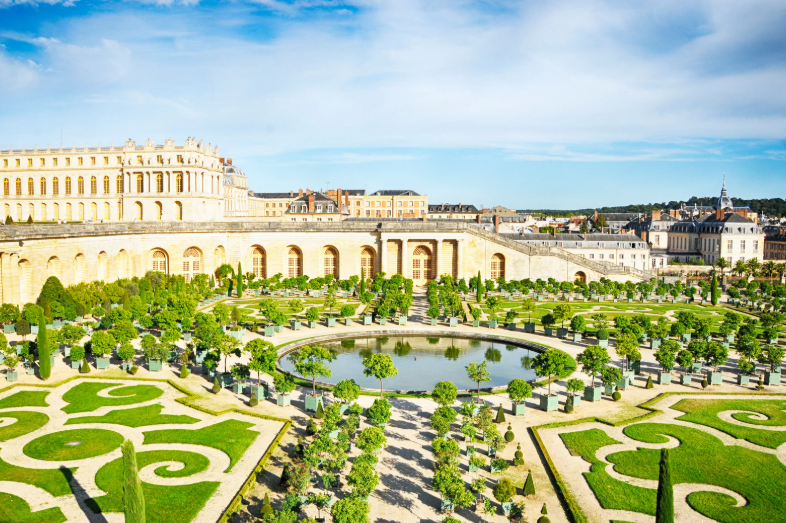
The Mission of UNESCO
UNESCO is like a guardian for the world’s greatest wonders. Founded in 1945, its purpose is to encourage peace and understanding by saving what’s important for all people, everywhere. Sometimes, that means ancient temples in Asia. Other times, it’s coral reefs in Australia or palaces in France. The idea is simple: these places tell big stories—about how humans live, dream, work, and grow.
UNESCO selects special sites to be on their World Heritage List. The goal is to keep these treasures safe from harm and neglect. For France, this means recognition for its most remarkable buildings, towns, and landscapes. Once a place gets recognized, it gains extra attention and help to protect and maintain what makes it special.
Criteria for Selection: Cultural & Natural Marvels
Not every old building or lovely park becomes a UNESCO site. To make the list, a place must be “of outstanding universal value.” That’s a fancy way of saying it must be important for all humankind. UNESCO uses clear criteria to decide. Some sites are picked for their cultural importance: maybe they changed art forever, show off amazing architecture, or mark a turning point in history. The Palace of Versailles, with its endless halls and gardens, is a good example.
Other sites are natural marvels—places where nature amazes us, like rare habitats or dramatic landscapes. France’s peaks in the Alps fall under this banner. Sometimes it’s a mix of both: places where nature and people have shaped the land together, like the vineyards of Burgundy.
A Quick Look at UNESCO World Heritage Sites in France
France as a Global Heritage Leader
France stands near the top when it comes to UNESCO World Heritage sites. As of 2025, it boasts over 45 entries on the list. Only a handful of other countries, such as Italy and China, come close in number. This is a mark of France’s long history and commitment to its cultural and natural treasures.
French sites represent nearly every aspect of heritage: architecture, art, food, science, spirituality, and scenic beauty. Some names jump out right away—think Notre-Dame or Mont-Saint-Michel. Others are lesser known, but just as meaningful, like the salt marshes of Aigues-Mortes or the decorated caves of Lascaux.
The Spread: From Paris to Provence and Beyond
What’s remarkable is how these sites stretch across the map. In Paris, you get treasures like the banks of the Seine, Notre-Dame Cathedral, and the Louvre. Head northwest to Normandy, and Mont-Saint-Michel rises from the sea. In sunny Provence, Roman history echoes through Avignon and the Pont du Gard.
Even the countryside is dotted with beauty. Vineyards in Saint-Emilion, the storybook castles of the Loire Valley, and alpine peaks near Mont Blanc all have their place. This national reach means you’ll find a UNESCO wonder almost everywhere—even in smaller towns. Bordeaux, Lyon, Carcassonne, and Strasbourg all host sites full of heart and history.
How to Explore UNESCO World Heritage Sites in France
Planning Your French UNESCO Itinerary

Exploring these heritage gems isn’t just for history majors or architecture buffs. Anyone can visit and appreciate them. Planning a trip starts with picking the right region or focus. Lovers of grand palaces may stay near Paris to see Versailles and Chartres. Nature fans might aim for the Alps or the Pyrenees.
Think about how much time you have for a short trip, group nearby sites. Paris alone can fill days with UNESCO sights within easy reach, including side trips to Versailles or Chartres. With more time, trips between Bordeaux’s vineyards, southern fortresses, or Alpine parks become possible.
Use official guides, like the Centre des Monuments Nationaux, and digital tools to map out routes and skip long lines. Rail passes, guided tours, or road trips help you jump from site to site. When possible, book tickets in advance, especially in the busy summer months.
Sustainable Tourism Tips for Visitors
UNESCO sites draw a lot of visitors, so it’s important to travel thoughtfully. Here are some tips:
- Visit outside peak hours or seasons to avoid crowds and ease pressure on local communities.
- Stay in local hotels or guesthouses to support small businesses.
- Use eco-friendly transport whenever you can. Trains and bikes are great for places like the Loire Valley or Strasbourg. Check Bike tour in Strasbourg.
- Respect the site rules. Don’t touch fragile art, don’t carve names, and avoid littering.
- Be mindful of noise and behavior in sacred or quiet spaces, such as Chartres Cathedral or Lascaux.
- Join guided tours led by local experts for a deeper understanding and to help communities benefit from tourism.
This way, everyone can keep enjoying France’s brightest treasures for generations to come.
1. The Iconic Wonder: Mont-Saint-Michel and its Bay
The Marvel of Normandy: Towers and Tides
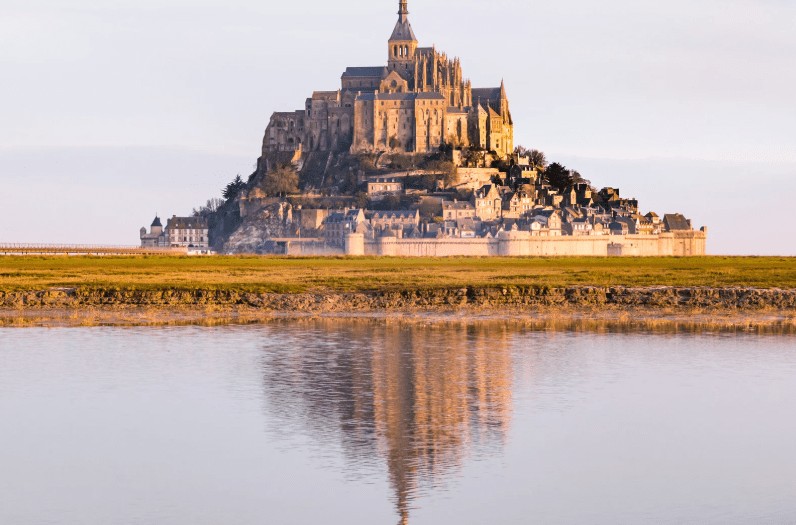
Mont-Saint-Michel isn’t just a postcard picture; it’s an experience. Rising from the shallow waters and sandbanks of Normandy, this abbey and its small village seem to lift from a fairytale. During high tide, water surrounds the mount, turning it into an island. When the tide draws back, vast sands stretch out in every direction.
The abbey itself is a medieval stone maze, perched high above the sea, with winding stairs, tall spires, and centuries-old halls. Builders began work over a thousand years ago, and for hundreds of years, different styles piled up: Romanesque arches, Gothic peaks, and thick defensive walls. Alongside the abbey, small stone houses and winding lanes add to the magic.
Legends, Monks & Magical Sunsets
Mont-Saint-Michel has deep roots in legend and faith. Long ago, the archangel Michael was said to have appeared to Aubert, Bishop of Avranches, and asked for a church on this rock. Over centuries, monks have lived, prayed, and worked on the mount, shaping its mysterious character.
Today, some Benedictine monks and nuns still tend to quiet corners of the abbey. At sunset, golden light sweeps over the stones, the bay, and the sky. Tide changes are fast—sometimes among the swiftest in Europe. Visitors often pause to watch as water surges in or slips away. The sight is peaceful, powerful, and almost otherworldly.
For a deeper look at Mont-Saint-Michel, guided tours are available through GetYourGuide
2.Palatial Grandeur: The Palace and Park of Versailles
King Louis XIV and the Age of Opulence
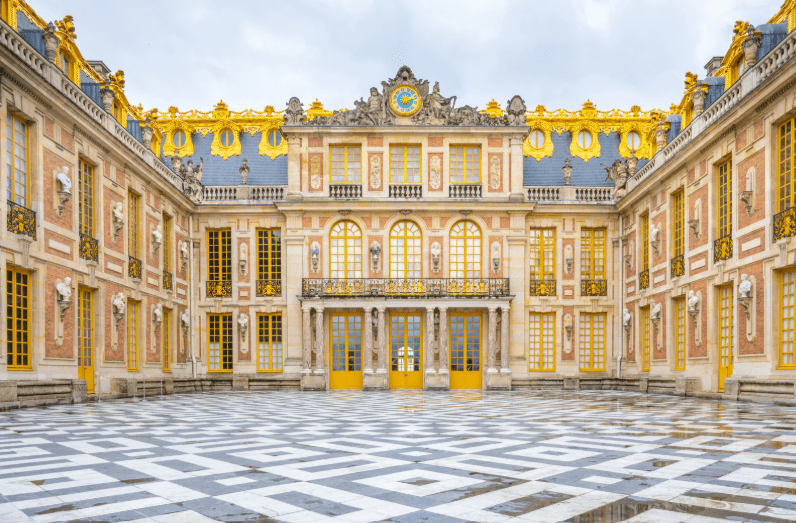
Of all the symbols of French royalty, none shines brighter than Versailles. Built in the 17th century by King Louis XIV, known as the “Sun King,” Versailles was designed to dazzle. No detail was too rich or too grand. Golden gates, vast halls with mirrors and chandeliers, and fine art everywhere made this palace a showpiece of French style and power.
Versailles set the bar for palaces across Europe, inspiring places from Vienna’s Schönbrunn to Russia’s Peterhof. Its Hall of Mirrors, dazzling with candles and sunlight, has hosted some of history’s most important moments—including the Treaty of Versailles that ended World War I.
Gardens, Fountains & Grand Spectacles
Beyond the palace walls, the gardens of Versailles unfold in neat lines, wide paths, and clever patterns. Designed by André Le Nôtre, these gardens stretch for almost 2,000 acres, dotted with fountains, groves, sculpture, and flowerbeds.
In summer, the fountains come alive with water shows, music, and sometimes fireworks—recreating the royal spectacles of Louis XIV’s time. Visitors can stroll along tree-framed lanes, rent rowboats on the Grand Canal, or admire secret garden rooms. Each corner offers a different view, mood, and memory of the palace’s opulent heyday.
For a deeper look at Versailles, guided tours are available through GetYourGuide
3.Medieval Majesty: Chartres Cathedral
Gothic Innovations and Breathtaking Stained Glass
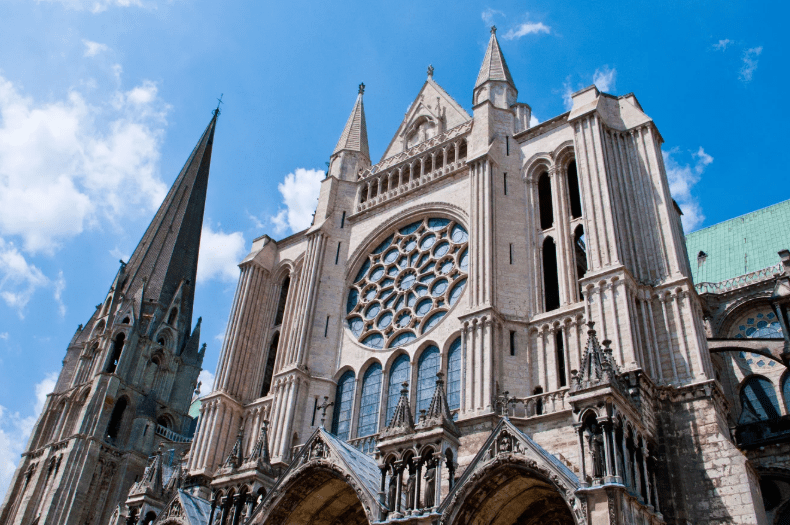
Standing tall in the heart of Chartres, this cathedral is a masterpiece of Gothic architecture. Completed in the 13th century, Chartres Cathedral shows off pointed arches, flying buttresses, and some of the most celebrated stained glass windows in the world.
The glass glows with deep blues and reds—colors so unique that experts sometimes call “Chartres blue.” Windows tell stories from the Bible and daily medieval life. Even today, as sunlight pours through, patterns and shades dance across the stone floors. Pilgrims and art lovers walk these aisles, heads tilted upward, hypnotized by the light and color.
A Center for Pilgrims through Centuries
Chartres has long been a beacon for travelers. In medieval times, thousands walked here each year to see the cathedral’s prized relic: what’s believed to be the tunic worn by Mary, the mother of Jesus. Even now, it remains an important stop on the pilgrimage route to Santiago de Compostela in Spain.
Friendly guides lead tours, and an evening light show, Chartres en Lumières, bathes the cathedral in vivid color. Its bells toll over the town, echoing across fields and rooftops—just as they have for hundreds of years.
For a deeper look at Chartres Cathedral, guided tours are available through GetYourGuide
4.The Riveting Past: The Historic Center of Avignon
The Popes, the Palais, and Festival Season
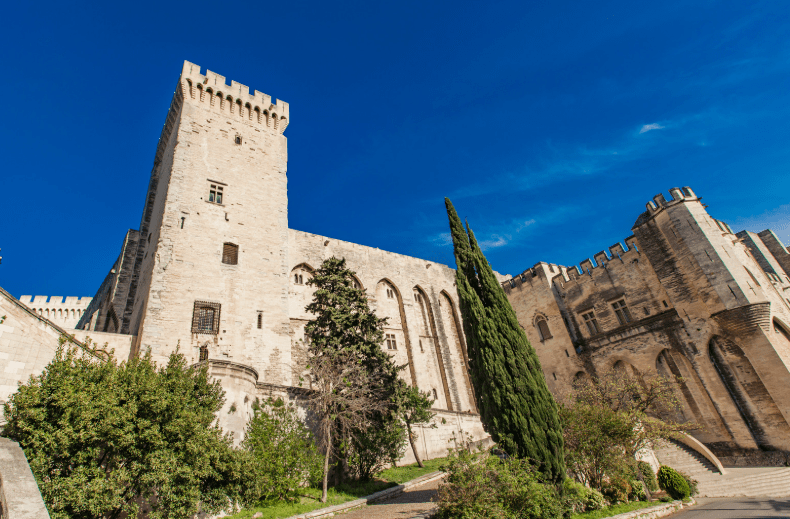
Avignon’s old center is wrapped in stone walls that have stood for 800 years. At its heart rises the Palais des Papes—one of the biggest and grandest medieval Gothic buildings anywhere. In the 1300s, Avignon was the center of the Catholic world. Seven popes called the city home, making it as important as Rome for a time.
The Palais dazzles with tall towers, maze-like rooms, frescoes, and private chapels. But Avignon is more than history on display. Each July, the famous Festival d’Avignon turns courtyards, squares, and churches into lively stages for the arts.
Medieval Walls and Timeless Charm
Avignon is a treat for the senses. Medieval streets curve and twist past bakeries, markets, and shaded cafes. The Pont Saint-Bénézet (the “Pont d’Avignon”) stretches partway over the Rhône River. Local legends, music, and dances add flavor to every visit.
The walled city glows at night under warm southern stars. From open-air concerts to hidden courtyards, and charming bistros, Avignon blends the old and the new in a way few places can match.
For a deeper look at Avignon, guided tours are available through GetYourGuide
5.Roman Glory: The Pont du Gard (Roman Aqueduct)
Engineering Genius of Ancient Rome
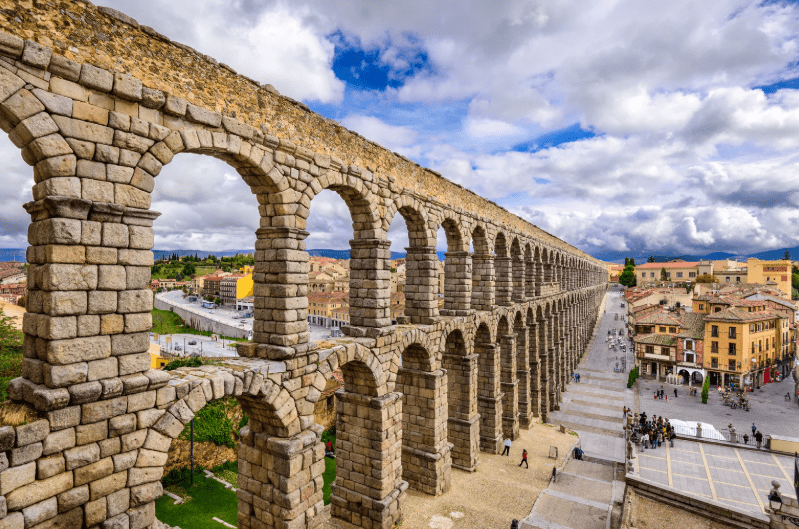
Pont du Gard is an ancient Roman aqueduct bridge that proves how clever Roman engineers were. Built nearly 2,000 years ago, it stands three stories high, with mighty arches cutting a bold line across the Gardon River.
The aqueduct once carried fresh water across the countryside, supplying the Roman city of Nîmes. Not a drop spilled—proof of Roman math and planning.
Family-Friendly Exploration & Swimming Spots
Today, Pont du Gard remains a fun site for families and history fans alike. You can hike on trails, cross the bridge on foot, or paddle and swim in the river below. There are visitor centers with hands-on exhibits about Roman life and engineering.
In summer, people picnic on the sandy riverbanks; children splash in cool water. Guided tours explain how stones were stacked without modern machines. It’s both a puzzle and a playground—a perfect blend of the past and present.
For a deeper look at The Pont du Gard , guided tours are available through GetYourGuide
6. Paris’s Heart: Banks of the River Seine
Notre-Dame, Louvre, and the Eiffel Tower Skyline
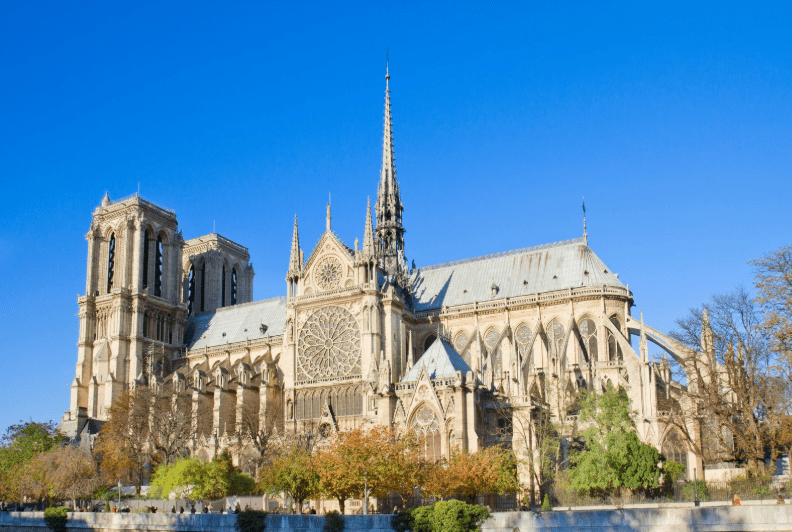
The River Seine slices through the center of Paris, shaping the city’s soul. Along its banks, UNESCO recognizes a treasure trove of history and artistry. Many of France’s most famous icons stand close together here. Notre-Dame Cathedral watches over the Ile de la Cité, a masterpiece of stone and faith. The Louvre Museum, once a royal palace, now holds the Mona Lisa and thousands of other masterpieces.
From riverbanks or boat cruises, the Eiffel Tower gleams above city rooftops. Historic bridges, like Pont Neuf, link each side of the city, showing off Paris’s famous golden sunsets.
Riverside Walks through History
Paris’s riverbanks are made for strolling. Follow the ancient quays to spot booksellers, cozy cafes, street artists, and musicians. In summer, temporary sandy beaches (Paris Plages) pop up along the water.
A simple walk turns into a journey through time. Medieval towers, art deco apartments, and grand museums blend into a living gallery. At night, bridges and buildings shine with soft lights, giving the city its famous sparkle—a scene that never gets old, no matter how many times you see it.
For a deeper look at River Seine, guided tours are available through GetYourGuide
7.The Historic Centre of Lyon: Renaissance Streets and Hidden Passageways
Traboules and Architecture
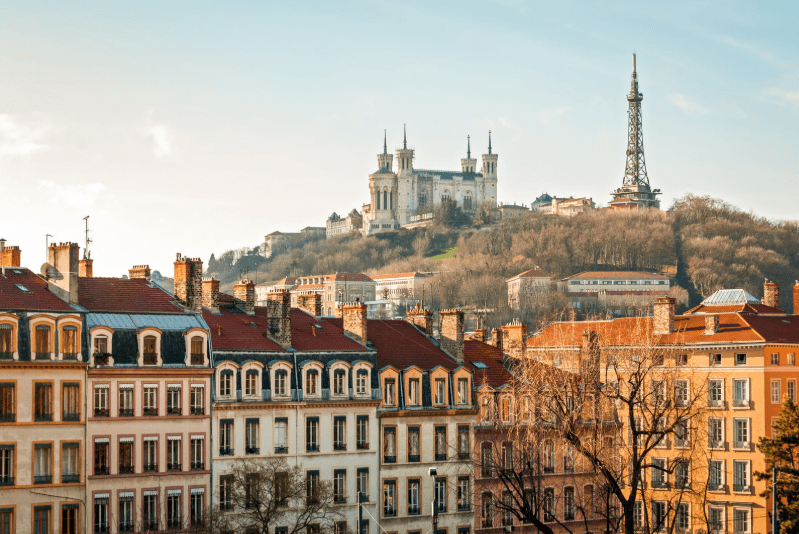
Lyon’s old town is famous for its traboules—narrow passageways weaving through buildings. These secret corridors were used by silk workers to transport fabrics safely and now offer a unique glimpse into the city’s past. Renaissance-era houses and colorful façades line the streets, creating a vibrant, historic atmosphere.
Squares, Churches, and Culture
The city’s squares and churches reflect centuries of urban development. Saint-Jean Cathedral, with its astronomical clock, stands as a highlight of Gothic and Romanesque styles. Cafés, artisan shops, and local markets fill the area, making Lyon a living museum of French culture.
For a deeper look at Lyon, guided tours are available through GetYourGuide
8.Mont Perdu Massif: Natural Wonders in the Pyrenees
Dramatic Landscapes
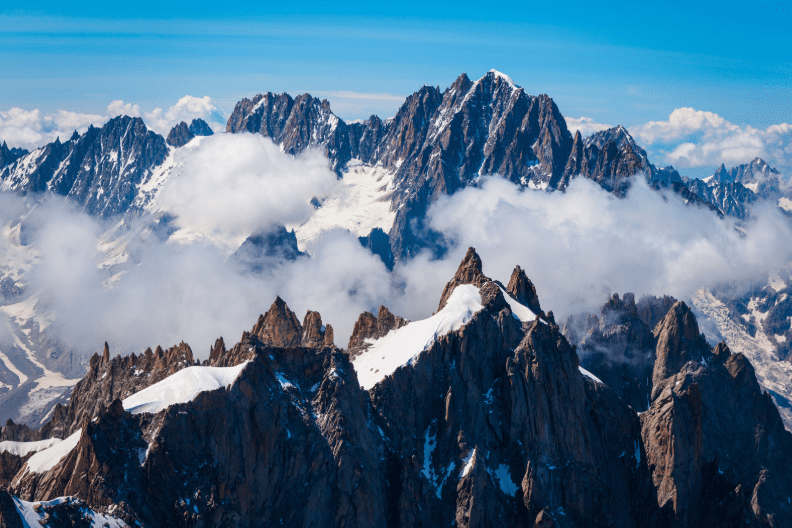
Mont Perdu offers breathtaking limestone cliffs, deep canyons, and panoramic views that attract hikers and nature lovers. The rugged terrain is part of a UNESCO-listed natural site shared with Spain, showcasing the power and beauty of the Pyrenees.
Rare Flora and Fauna
This massif is home to unique plants and wildlife adapted to high-altitude conditions. Trails guide visitors through meadows, forests, and glacial valleys, combining adventure with learning about nature conservation.
For a deeper look at Mont Perdu Massif, guided tours are available through GetYourGuide
9.Carcassonne: Medieval Fortifications and Timeless Streets
Double Walls and Towers
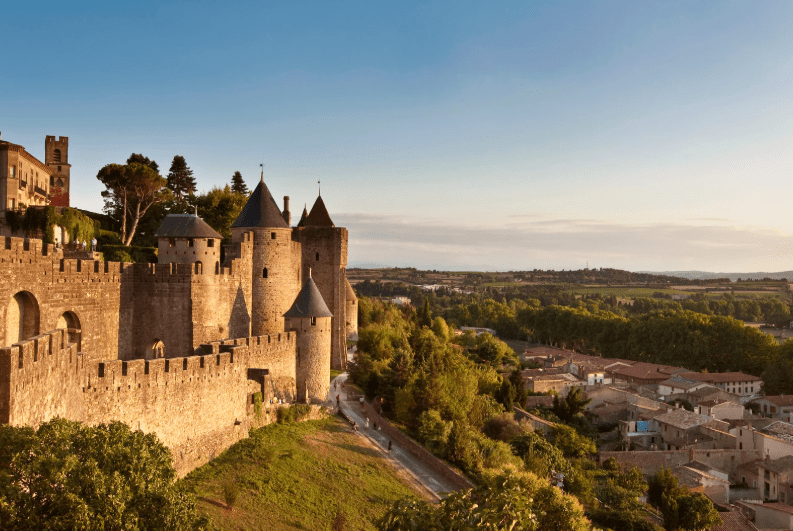
Carcassonne’s iconic fortified city features a double ring of walls and towering ramparts. Walking along the battlements gives a sense of life in medieval France and a close-up view of defensive architecture.
Historic Streets and Gothic Cathedral
Inside the walls, cobblestone streets lead to Gothic buildings, artisan shops, and cafés. The Basilica of Saints Nazarius and Celsus displays stunning stained glass, blending spiritual and architectural history for visitors to explore.
For a deeper look at Carcassonne, guided tours are available through GetYourGuide
10.Vézelay: Pilgrimage and Panoramic Views
Basilica of Sainte-Marie-Madeleine
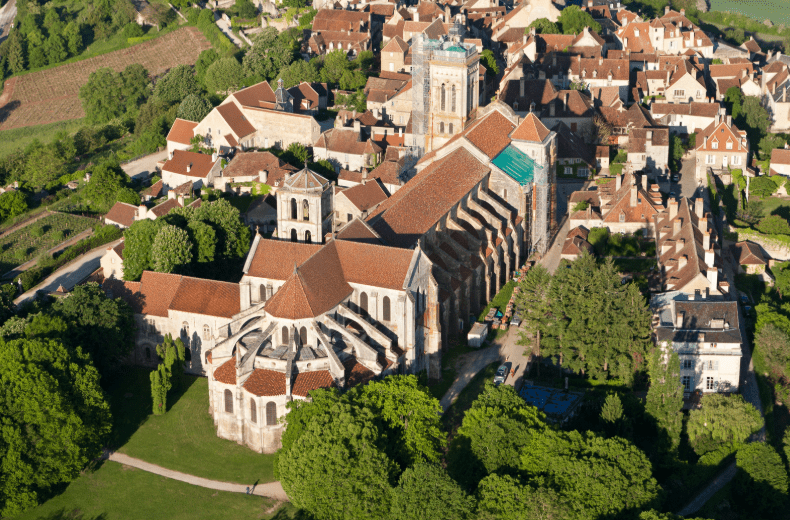
Vézelay’s basilica is a major pilgrimage site and a masterpiece of Romanesque architecture. Its sculpted portals depict biblical stories, drawing travelers who wish to experience spiritual history.
Town and Surrounding Countryside
The hilltop town offers sweeping views over the Yonne valley. Its quaint streets, artisan shops, and quiet atmosphere create a serene environment, perfect for reflection after visiting the basilica.
For a deeper look at Vézelay, guided tours are available through GetYourGuide
Conclusion
Exploring UNESCO World Heritage Sites in France is more than sightseeing. It’s about stepping into history, walking with legends, and seeing how culture and nature continue to shape our world. For a smoother experience, consider booking guided tours (GetYourGuide) or checking local passes and tickets (Official Centre des Monuments Nationaux) to plan your itinerary. These resources make your visit easier and more meaningful, letting you fully enjoy France’s treasures while supporting preservation efforts.
When planning your trip, think beyond the famous names. Visit lesser-known gems like Avignon’s medieval walls or the salt marshes of Aigues-Mortes. Travel responsibly—use trains, support local businesses, and respect site rules—so your journey helps protect the places you love.
1.What are UNESCO World Heritage Sites in France?
UNESCO World Heritage Sites in France are landmarks recognized for their cultural or natural importance. They reflect France’s history, architecture, and landscapes.
2.How many UNESCO World Heritage Sites are in France?
France has over 40 UNESCO World Heritage Sites, including castles, cathedrals, and natural parks.
3.Why are UNESCO World Heritage Sites in France important?
These sites preserve France’s cultural and natural heritage. They attract tourism and teach visitors about history.
4.Which French castles are UNESCO World Heritage Sites?
Famous castles like Château de Chambord and Château de Versailles are recognized as UNESCO World Heritage Sites in France.
5.Are there natural UNESCO World Heritage Sites in France?
Yes, sites like the Calanques National Park and the Pyrénées-Mont Perdu are natural World Heritage Sites.
6.Can tourists visit all UNESCO World Heritage Sites in France?
Most sites are open to the public, though some areas may have restricted access to protect them.
7.How can I plan a trip to UNESCO World Heritage Sites in France?
Research sites, group them by region, and check opening hours to make a clear travel plan.
8.What makes French cathedrals UNESCO World Heritage Sites?
Cathedrals like Chartres show unique architecture, art, and historical importance recognized worldwide.
9.Are UNESCO World Heritage Sites in France family-friendly?
Many sites offer guided tours, parks, and activities suitable for both children and adults.
10.Do UNESCO World Heritage Sites in France require tickets?
Some sites charge entrance fees, while others, like city landmarks, are free to visit.
11.Which French towns are UNESCO World Heritage Sites?
Towns like Carcassonne, Avignon, and Lyon are UNESCO World Heritage Sites for their history and architecture.
12.How can I learn about UNESCO World Heritage Sites in France online?
Official UNESCO and tourism websites provide maps, history, and travel tips for each site.
13.Are there UNESCO World Heritage Sites near Paris?
Yes, sites like Versailles Palace, Mont-Saint-Michel, and the banks of the Seine are near Paris.
14.What is the oldest UNESCO World Heritage Site in France?
Sites like Mont-Saint-Michel date back to the Middle Ages and remain well-preserved today.
15.How long does it take to visit UNESCO World Heritage Sites in France?
Visits range from a few hours to a full day, depending on the site’s size and attractions.
16.Are UNESCO World Heritage Sites in France accessible by train?
Many sites are reachable by train, including Versailles, Lyon, and the Loire Valley castles.
17.Can I photograph UNESCO World Heritage Sites in France?
Photography is allowed in most outdoor areas, though some interiors may have restrictions.
18.Are UNESCO World Heritage Sites in France expensive to visit?
Costs vary; some sites are free, while others charge entrance fees or guided tour prices.
19.What are the top UNESCO World Heritage Sites to visit in France?
Popular sites include Mont-Saint-Michel, Château de Versailles, Chartres Cathedral, and the Loire Valley castles.
20.How do UNESCO World Heritage Sites in France preserve culture?
They protect architecture, landscapes, and traditions, ensuring France’s heritage is maintained for future generations.


